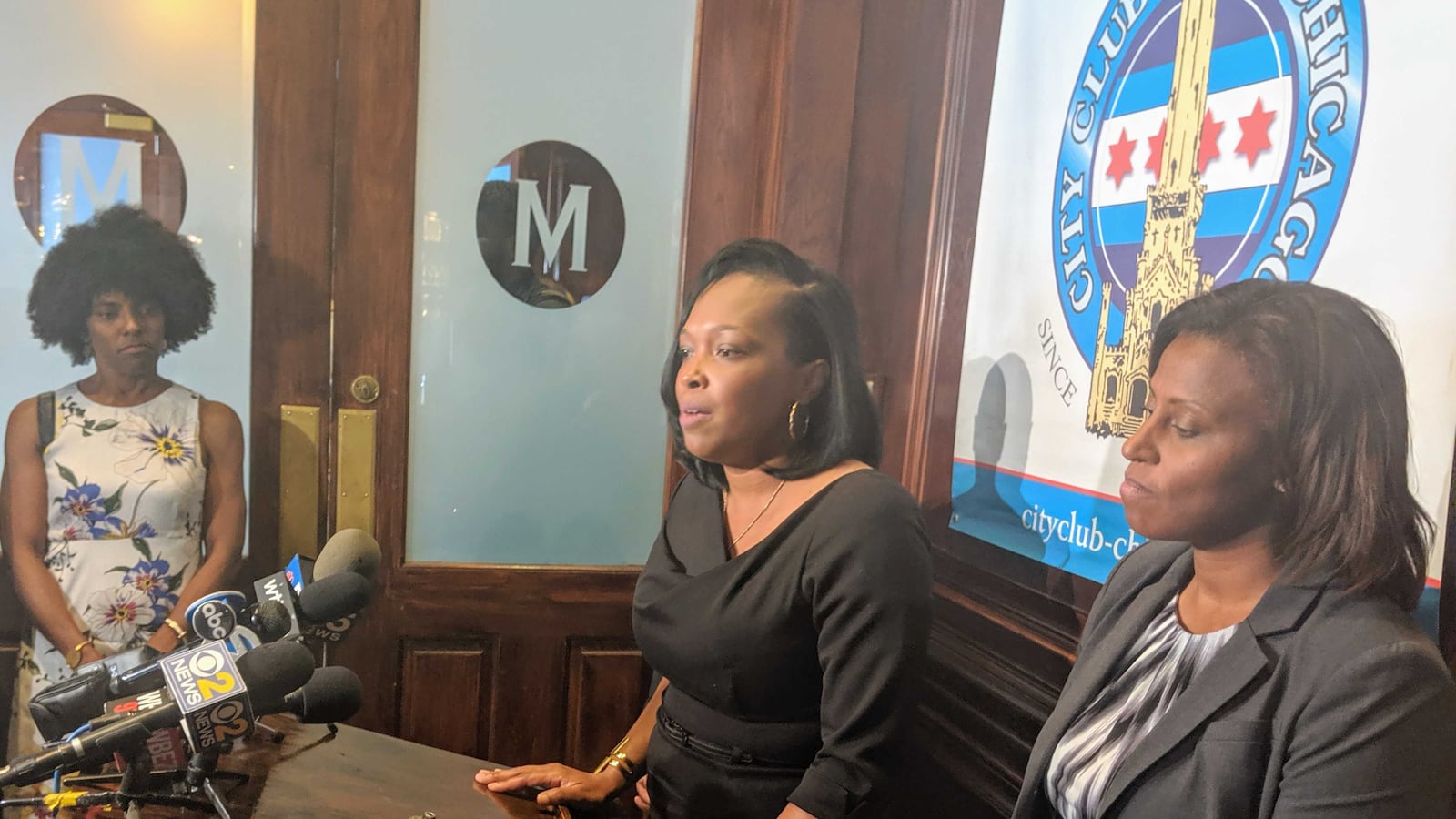After a week of touting new student performance data, including record-high graduation rates, Chicago schools chief Janice Jackson said Thursday that the district was on the right track heading into the 2019-20 school year.
But she also acknowledged that Chicago Public Schools needs to raise the achievement of African-American and Latinx students — boys in particular.
Related: How one Chicago principal is leaning on data to help black boys
The city announced on Thursday that almost 79% of Chicago’s seniors graduated in five years this spring, compared with closer to 78% the year prior.
“I’m not satisfied,” Jackson said of the district’s performance. “I like the incremental growth, but we need to see exponential growth, particularly among our African-American male and Latino male students, if we’re going to meet the goals we’ve outlined in our vision.”
Related: Chicago schools are in better financial shape, but civic watchdog says district needs long-term plan
Her comments followed a stirring 20-minute speech Thursday afternoon to a gathering of business and civic leaders organized by the City Club of Chicago. In the speech, Jackson highlighted district investments in new programs and curriculum at neighborhood schools, a renewed focus on early career and college credentials, commitments to hiring more school support staff, and universal Pre-K expansion as ways to “level the playing field.”
Asked after the speech about the specific approaches the district is taking to close racial and gender disparities in graduation rates, Jackson said new attention to what students are being taught would be key.
“I think in order to get to the 90 percent graduation rate that we’ve outlined in our vision, we have to have strong curriculum and academic programs in our schools, which is why we’re making a commitment around more IB and STEM programs, and a quality curriculum in every school,” she said. “I think by coupling the social emotional support with academic support, we’re going to get there.”
Related: Chicago approves $33 million for school police despite student criticism
Jackson said the district has prioritized social emotional learning and mentoring for black and brown boys, and will continue to do so, while looking for interventions similar to the Summer for Change program championed by Mayor Lori Lightfoot. The six-week program debuted this summer, providing mentoring, therapy, stipends, and experiential learning to 400 students considered at risk of being victims or perpetrators of violent crime.
On average, black and Latinx students trail their white and Asian peers in many measures of academic success, according to district data. And female students of all races graduate at higher rates than their male counterparts.
Here’s a closer look at graduation rates.
- Black students’ graduation rate increased from 71.8% to 73.3% over last year, but still trailed white students’ 87.6% graduation rate.
- The Latinx graduation rate declined slightly to 81.2%.
- Black males’ 5-year graduation rate in 2019 was 65.4% compared to 81.2% for black females.
- Latino males had a 77% graduation rate, compared to 85.5% for Latinas.
- Students designated as English language learners, requiring special education services, and economically disadvantaged all have lower graduation rates than their peers without those labels.
Of the four biggest racial groups at the district, Latinx and African-American students have the lowest attainment and growth on the NWEA test in reading and math. Here’s how the scores — released earlier this week — break down.
- Just under 63% of Latinx students scored above grade level attainment norms on the NWEA reading test in 2019, compared to 85.4% of Asian students and 84.1% of white students. Black students reading attainment remained flat at 51.2%.
- In math, black students attainment actually decreased from 43.3% to 42.9%, which was the lowest among any racial group at the district, behind Latinx students (58.9%), white students (82.5%) and Asian students (89.3%).
- Under 56% of black students met grade-level growth norms in reading, compared to 62.4% of Latinx students, 68.2% of white students, and 71.5% of Asian students.
- For math growth, 50.9% of black students met grade level norms, compared to 57% of Latinx students, 65% of white students and 71.8% of Asian students.

